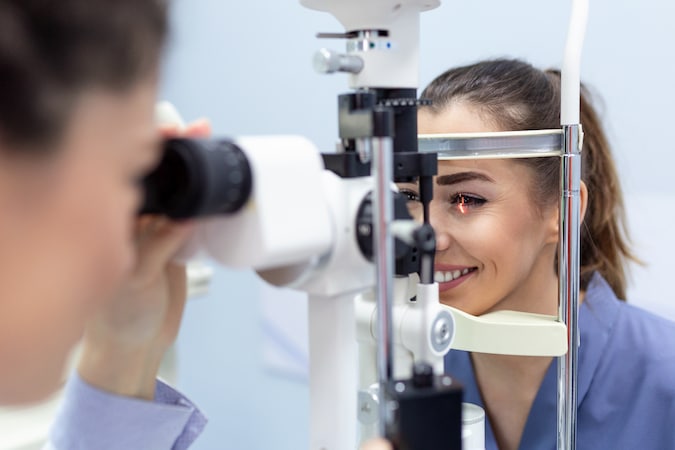
Understanding the 60-Day Special Enrollment Period for Health Insurance

When you experience a major life event, such as a job loss or marriage, you may qualify for a Special Enrollment Period (SEP). This 60-day window allows you to secure health insurance and avoid gaps in coverage. Missing this window can lead to hefty medical expenses and no access to necessary care.
Health insurance providers, including SelfGood , offer SEPs to allow individuals to adjust their coverage after a qualifying life event (QLE). Understanding how SEPs work ensures you maintain continuous health coverage and avoid unnecessary costs.
Key Takeaways:
- A Special Enrollment Period (SEP) is a limited window to sign up for or modify health insurance outside of Open Enrollment.
- Qualifying life events (QLEs), like job loss, marriage, or moving, can trigger a 60-day SEP.
- Missing the 60-day SEP deadline could result in losing coverage until the next Open Enrollment.
What Is a Special Enrollment Period (SEP)?

A Special Enrollment Period is a 60-day window that allows individuals to change or enroll in a health insurance plan after a qualifying life event. Normally, health insurance is only available during the annual Open Enrollment Period. However, SEPs provide an exception, ensuring people can access health insurance after significant life changes.
For example, if you lose your job or move to a different state, these qualifying life events enable you to enroll in a new plan. This ensures you aren’t left without coverage until the next Open Enrollment. SEPs apply to both marketplace health plans and employer-sponsored plans.
What Qualifies as a Life Event That Triggers an SEP?
Several qualifying life events (QLEs) can trigger a SEP, each affecting your health insurance options differently. Here are some common QLEs:
1. Loss of Previous Health Coverage
If you lose coverage through an employer, Medicaid, or other sources, this is considered a qualifying life event. This could include losing coverage due to job loss, aging out of your parent’s plan at 26, or losing Medicaid eligibility. In these cases, a SEP is triggered, allowing you to enroll in a new plan12.
2. Changes in Household
Major life changes such as marriage, divorce, childbirth, or adoption can qualify you for an SEP. These changes impact the size of your household, meaning your health insurance needs will likely change as well13.
3. Change of Residence
If you move to a new state, city, or even ZIP code, you may qualify for a SEP. This is because your old health plan may no longer be available, and you’ll need to select a new one based on your new location2.
4. Changes in Income
Significant changes in your income that affect your eligibility for health subsidies or Medicaid can also trigger a SEP. For example, a sudden increase in income may disqualify you from Medicaid, requiring you to select a different plan3.
5. Other Special Situations
Other unique circumstances, such as gaining U.S. citizenship, being released from jail, or experiencing a natural disaster, can also qualify as a QLE. These situations provide flexibility to ensure that individuals can still secure health coverage2.
How Does the 60-Day Window Work?
Once a qualifying life event occurs, you have 60 days to enroll in a new health plan or modify your existing coverage. The window starts on the date of the QLE, such as the day you lose your job or get married. It’s essential to act within this timeframe because missing it could result in losing access to affordable health insurance until the next Open Enrollment Period.
For example:
- If you lose your job on September 1st, your 60-day window will run through October 30th.
- After getting married on May 15th, your SEP will run through July 14th, allowing you to adjust coverage for your spouse23.
Failing to take advantage of this 60-day window could mean several months without health coverage. It’s important to apply for coverage as soon as possible to avoid gaps.
Proof Requirements for Special Enrollment Periods

To qualify for a SEP, you must provide proof of your QLE. The type of documentation you’ll need depends on the life event you experienced. Common examples include:
- Marriage certificatefor adding a spouse to your health plan.
- Termination lettersor proof of losing employer-sponsored coverage for job loss.
- Birth certificatesor adoption papers for enrolling a new child23.
Documentation needs to be submitted to the marketplace or your insurance provider within the 60-day window. Having this paperwork ready ensures a smooth transition to new coverage.
What Happens If You Miss the 60-Day Deadline?
If you don’t enroll in a health plan within the 60-day window, you may face serious consequences. Without a valid SEP, you’ll have to wait until the next Open Enrollment Period, which could be several months away. During this time, you won’t have health coverage, which could lead to substantial medical bills if you need care.
Options for Coverage If You Miss the SEP Deadline:
- Short-term health insurance:These plans are temporary but may help bridge the gap until the next Open Enrollment.
- Waiting for Open Enrollment:If you miss the SEP deadline, you’ll need to wait until the next OEP to enroll in full coverage23.
Final Thoughts
The 60-day window during a Special Enrollment Period is critical for securing health insurance after a significant life event. Whether you’ve experienced job loss, marriage, or a change in residence, understanding the steps and deadlines involved in enrolling in a health plan can prevent coverage gaps and financial risks. Always act promptly after a qualifying event, and ensure you have the necessary documentation ready to avoid delays in processing your new plan.
Frequently Asked Questions:
Is pregnancy considered a qualifying life event?
Pregnancy is not typically considered a qualifying life event for a SEP. However, giving birth or adopting a child is, and it triggers a 60-day enrollment window for your new dependent3.
How does job loss affect SEP eligibility?
Losing your job qualifies as a QLE, allowing you to enroll in a new health plan during the SEP. This applies even if you voluntarily leave your job1.
Can I apply for health insurance before a qualifying life event happens?
In some cases, such as a scheduled job loss or planned move, you can start the process before the QLE occurs. However, the SEP is typically triggered on the day of the event2.
Sources:
- CMS . (2023). Understanding Special Enrollment Period Requirements.
- Healthcare.gov . (2023). Special Enrollment Periods and Qualifying Life Events.
- Medicare.gov . (2023). SEP Deadlines and Medicare Enrollment.




